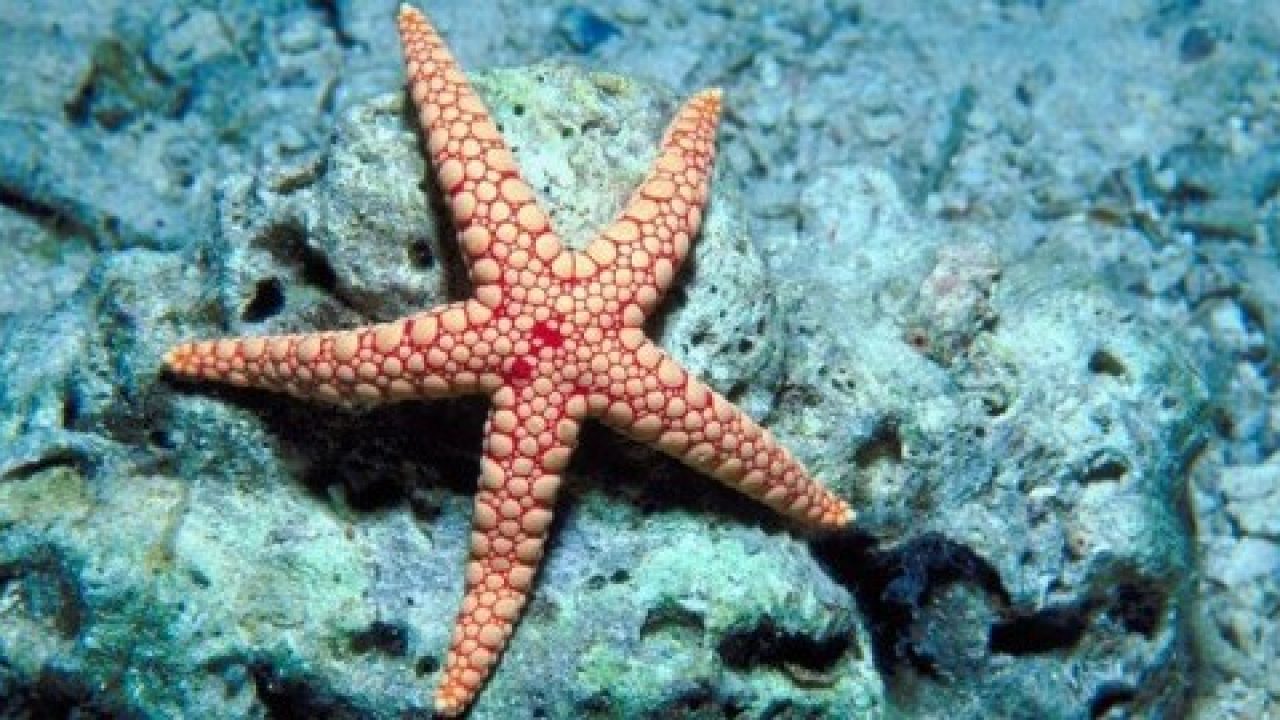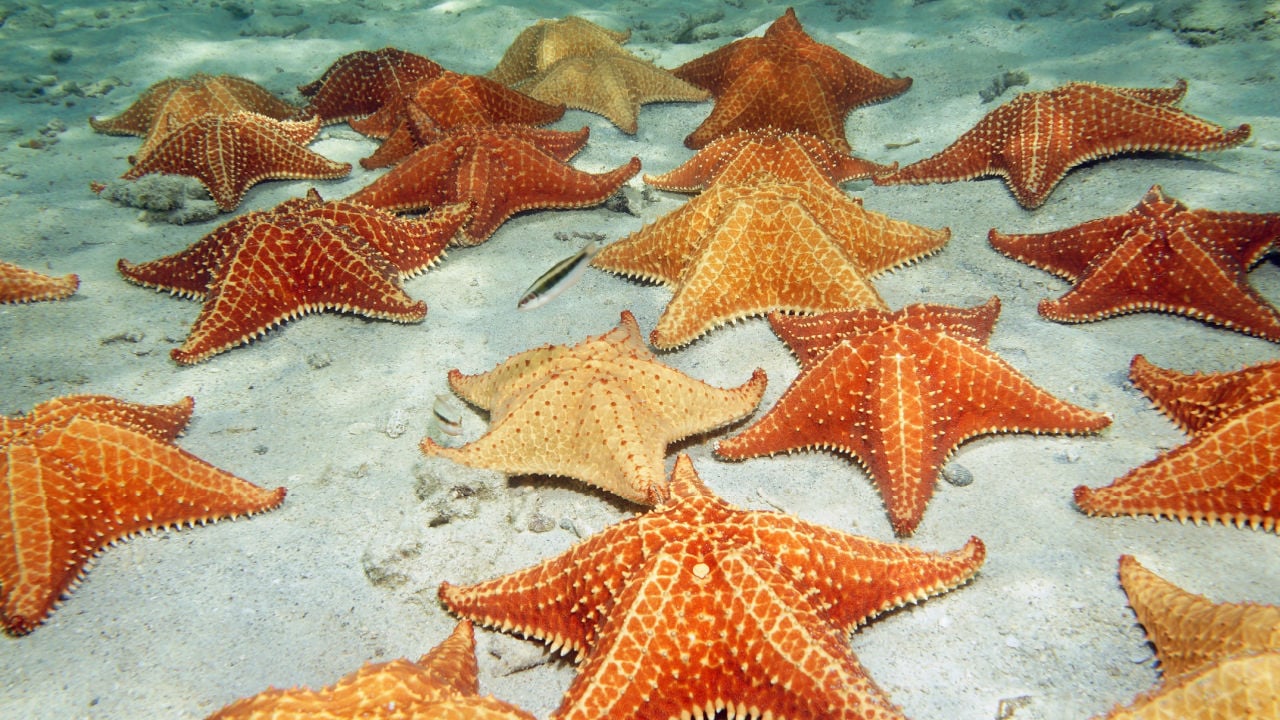Study Reveals Starfish Essentially Is A Single Enormous Head
Study reveals starfish essentially is a single enormous head after years of scientific curiosity, cracking the enigma of starfish anatomy. These echinoderms, encompassing sea stars, sea urchins, and sea cucumbers, are essentially mobile heads with minimal body structures.
Author:Hajra ShannonReviewer:Paula M. GrahamNov 08, 202324 Shares24.4K Views

Study reveals starfish essentially is a single enormous head after years of scientific curiosity, cracking the enigma of starfish anatomy. These echinoderms, encompassing sea stars, sea urchins, and sea cucumbers, are essentially mobile heads with minimal body structures.
The evolutionary journey of echinoderms has been a puzzle, considering they originated from bilateral organisms with symmetrical sides. Despite this, they managed to transition into a radial body plan, where limbs, such as the five arms in adult sea stars, radiate from a central hub.
In the grand spectrum of Bilateria, a biological clade from worms to humans, echinoderms stand out as unique for abandoning their original bilateral form. Interestingly, the planktonic larvae of sea stars still exhibit bilateral symmetry, providing a glimpse into the ancestral body structure that echoes through evolutionary history.
Scientists who are trying to figure out how echinoderms evolved have come up with the duplication hypothesis, which says that these sea creatures kept a basic two-part body plan and copied it. This theory says that each arm of a sea star has the same two-part shape as its more common relatives. The front part (the head) is in the middle, and the five back parts (the arms) spread outward.
On the flip side, there's the stacking hypothesis, which presents a contrasting view. In this scenario, the top of a sea star is considered the posterior end, while the rest of the body is arranged in a stacked manner beneath it, ultimately placing the anterior at the bottom.
In a recently published study on November 1 in the journal Nature, researchers challenge the prevailing notions, asserting that neither the duplication hypothesis nor the stacking hypothesis accurately represents the evolution of echinoderms. Instead, they propose a groundbreaking idea: over time, echinoderms underwent a significant transformation, shedding almost their entire trunks and consolidating their head as their primary body.
To decipher the intricacies of echinoderm anatomy, the researchers conducted genetic tests on bat stars (Patiria miniata). By analyzing the types of genes expressed in different areas of the animal's body, they sought to pinpoint the head and unravel the true structure of these fascinating creatures.
“„We made slices of the sea star and sequenced each slice to construct a 3D model of the messenger RNA [mRNA] across the body.- Laurent Formery, a developmental biologist at Stanford University's Hopkins Marine Station and lead author
To delve deeper into the sea star's genetic makeup, the researchers employed a fluorescent dye designed to highlight specific types of mRNA. This innovative approach allowed them to visualize the mRNA under a fluorescent microscope, offering insights into its expression throughout the sea star's body.
Their findings challenged existing hypotheses. "We found that anterior genes are expressed all the way to the tip of the arms," Formery said, while genes related to more posterior regions were expressed at the outer edges of the arms. According to the duplication hypothesis, anterior genes should be at the tips of the arms, and according to the stacking hypothesis, they should be expressed on the central, top side of the organism.
Interestingly, the study extends its implications beyond sea stars, suggesting that even seemingly bilateral echinoderms like sea cucumbers follow a similar pattern. Despite their outward bilateral appearance, sea cucumbers likely exhibit a radial body plan, resembling a stretched-out head lying on its side rather than possessing a distinct head and trunk, challenging previous assumptions.
“„Although a slight oversimplification, the findings suggest that one could think of the body of a starfish (at least in terms of the anterior-posterior identity of its surface tissues) as a disembodied head walking about the sea floor on its lips - the lips having sprouted a fringe of tube feet, co-opted from their original function of sorting food particles, to do the walking.- Thurston Lacalli, a biologist at the University of Saskatchewan in Canada
The reasons behind the evolution of this unique echinoderm body plan remain elusive. Bilateral symmetry has proven to be highly successful throughout evolutionary history, making the emergence of a radial body plan in echinoderms particularly intriguing. These marine creatures made their debut at the onset of the Cambrian period, a pivotal time marked by the emergence of a vast array of diverse organisms, adding an extra layer of mystery to the evolution of their distinct anatomical structure.
Conclusion
Formery points out, "If you look extant animals, all of their body organization types originated about at the same time." While these evolutionary forces favored bilateral symmetry in many species, something peculiar occurred in the case of echinoderms. Instead of following the conventional path, they took a distinctive route, resulting in these creatures resembling mobile heads navigating the seafloor.
Jump to

Hajra Shannon
Author

Paula M. Graham
Reviewer
Latest Articles
Popular Articles
